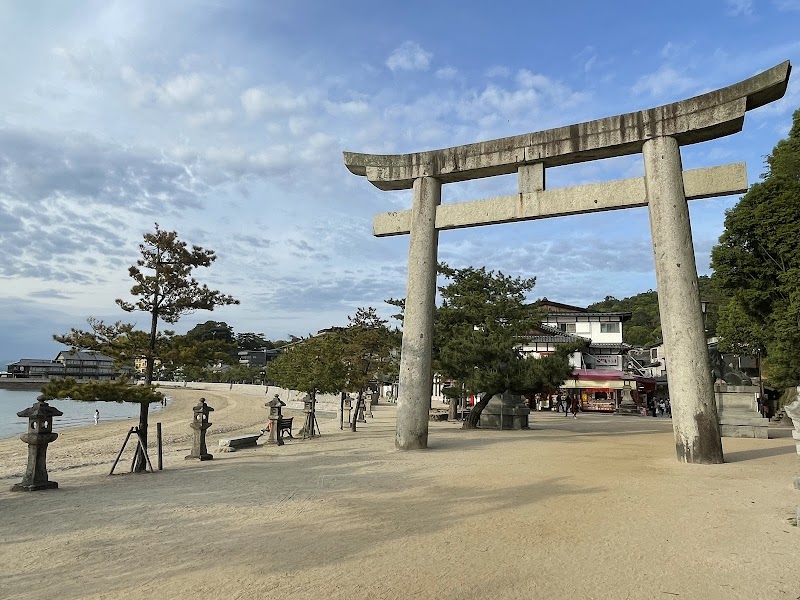
Experience the Miyajima Water Fireworks Festival in Hatsukaichi, where fiery bursts illuminate the Seto Inland Sea against the iconic backdrop of the floating torii gate. This summer event combines natural beauty with cultural spectacle, offering visitors a practical and thrilling adventure on Japan’s revered island.
Arrive Early for Best Viewing
Crowds gather quickly along the shoreline and near Itsukushima Shrine. Arriving at least two hours before the fireworks start secures better spots and less stress navigating the site.
Wear Comfortable Shoes
The festival area involves walking on mixed terrain—paved paths and compact gravel—and standing for extended periods. Supportive, breathable footwear will keep you comfortable.
Stay Hydrated and Protected
August heat and humidity demand ample water intake. Bring a refillable bottle and apply sunscreen before sunset to avoid heat fatigue during the day.
Plan Your Return Transport
Expect heavy congestion on ferries after the show. Booking accommodation nearby or having flexible travel plans will ease post-festival transit.
Miyajima Water Fireworks Festival: A Night Where Water Meets Flame in Hatsukaichi
Each August night, Hatsukaichi's Miyajima Island hosts a spectacle where water and fire duel in luminous harmony—the Miyajima Water Fireworks Festival. This event commands your attention along the calm Seto Inland Sea, where fiery explosions leap from boats bobbing on the waves, igniting the sky and reflecting in the shimmering waters below. Arriving on the island, you feel the pulse of anticipation, the air thick with summer's warmth and scent of sea salt mingling with the smoke of pyrotechnics.
The festival unfolds over roughly an hour, launching more than 3,000 fireworks that paint the night with bursts of color—homespun crimson reds, vibrant emerald greens, and glowing golds that flirt with the silhouettes of the famous floating torii gate at Itsukushima Shrine. Unlike typical fireworks viewed from dry land, here the water is a key player: flames seem to rise from the sea itself, daring the lapping waves to put them out. Because the fireworks are set off from platforms afloat, the experience is intimate and raw.
Planning your visit requires practical steps. Miyajima is a 10-minute ferry ride from Miyajimaguchi in Hatsukaichi, and during the festival, crowds surge. Arrive early to secure a good vantage point near the shoreline or near the torii gate pier, as space fills quickly. Comfortable footwear is a must for the gentle yet steady ascent from ferry docks to prime viewing spots, and hydration is crucial, especially under August’s humid skies.
Transportation back post-event can be slow due to the volume of attendees—consider scheduling an overnight stay in Hatsukaichi or Hiroshima city to avoid the rush. Bringing a compact chair or blanket helps, but keep your belongings light to maneuver through crowds.
The surrounding natural environment holds its own personality; the sea breeze carries whispers of the forested hills behind, and the tremble of water underfoot reminds you of the island’s living pulse. Fireworks here don’t just light the sky—they animate the landscape, echoing the island’s ancient spirit.
For adventurers and casual travelers alike, the Miyajima Water Fireworks Festival offers an unmatched chance to witness culture and nature electrify each other. Prepare well, arrive early, and let the night’s vivid dance of flame and water etch itself into your memory, firmly grounded in the practicalities of travel and the thrill of shared wonder.
Nearby Trips
All Adventures
Boat Charters
Water Activities
Adventures near Hatsukaichi, Hiroshima
Discover the unique and memorable adventures that make Hatsukaichi, Hiroshima special.
Frequently Asked Questions
Where is the best spot to view the Miyajima Water Fireworks Festival?
Prime viewing spots are along the eastern shoreline near the floating torii gate of Itsukushima Shrine. Arriving early helps secure unobstructed views and a balance between the fireworks and silhouette of the gate.
How crowded does the festival get, and how should I prepare?
The festival draws thousands, especially between 7 pm and 9 pm. Prepare for slow movement, bring water, wear breathable clothes, and consider staying nearby overnight to avoid festival-day travel delays.
Are there other activities on Miyajima Island during the festival?
Yes. During the day, visitors can explore trails like Mt. Misen’s routes, visit the shrine, or enjoy local cafes. Even during the event, quieter pockets exist if you head away from main viewing points.
Is photography allowed and recommended at the festival?
Photography is encouraged, especially silhouettes of fireworks against the torii gate. Use a tripod and arrive early to set up to capture steady shots in low light.
What wildlife might I encounter on Miyajima during the festival?
Wild deer roam the island freely, often curious but respectful. The festival’s noise may quiet smaller birds, though marine life remains active in the waters below.
Are there any environmental concerns relating to the festival?
Organizers enforce clean-up efforts to keep the island pristine. Visitors should respect the natural environment by minimizing litter and staying on designated paths to protect local flora.
Recommended Gear
Comfortable Walking Shoes
Supportive footwear for standing and walking on uneven surfaces near waterfront and shrine areas.
Refillable Water Bottle
Stay hydrated in summer’s humidity; water sources are limited on the waterfront during events.
Portable Seat or Blanket
Useful for comfort during long waits, especially if you plan to arrive early for prime viewing.
Light Jacket or Windbreaker
Evening breezes along the water can chill; a light jacket ensures comfort post-sunset.
Local Insights
Hidden Gems
- "Quiet observation decks along the northern shore offer a less crowded yet beautiful view of the fireworks."
- "The forested trails of Mt. Misen provide evening cooler breezes and a chance to escape the festival crowd."
Wildlife
- "Sika deer that casually wander across paths and beaches, often found resting near shrine areas."
- "Night-active insects and coastal bird species that respond subtly to fireworks displays."
History
"The festival is rooted in traditional Japanese celebrations to honor sea deities and seasonal cycles, linking pyrotechnics with local spirituality and reverence for the water that surrounds Miyajima."
